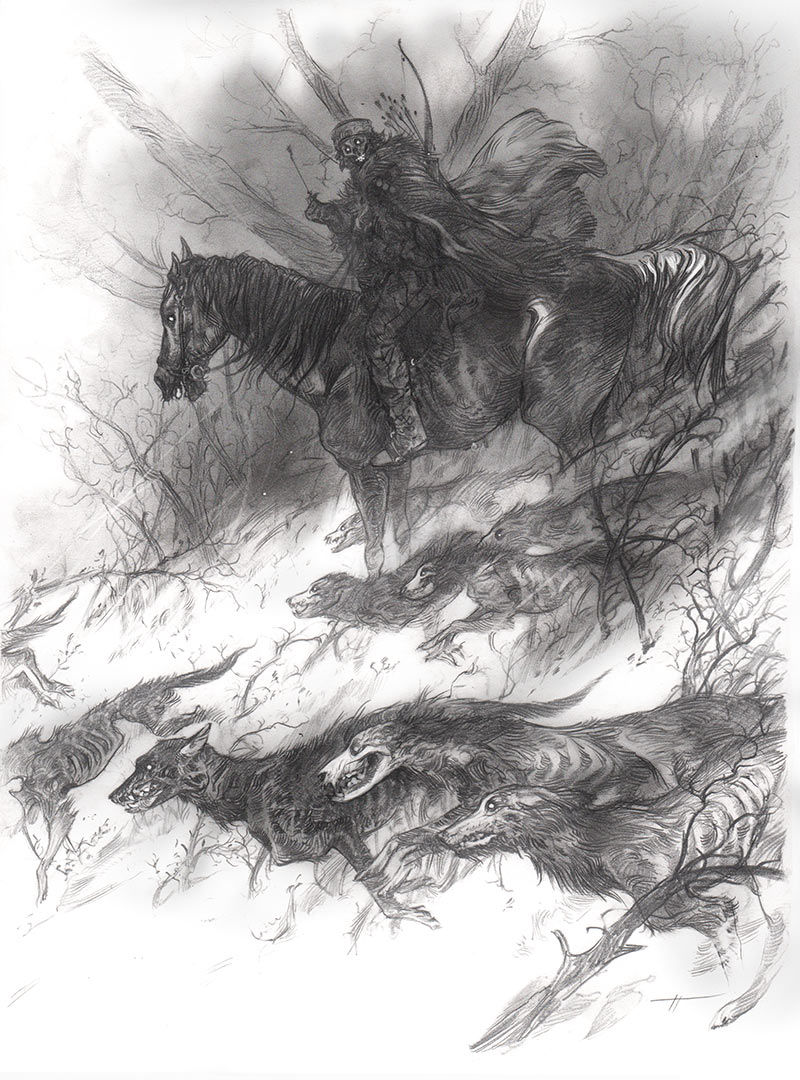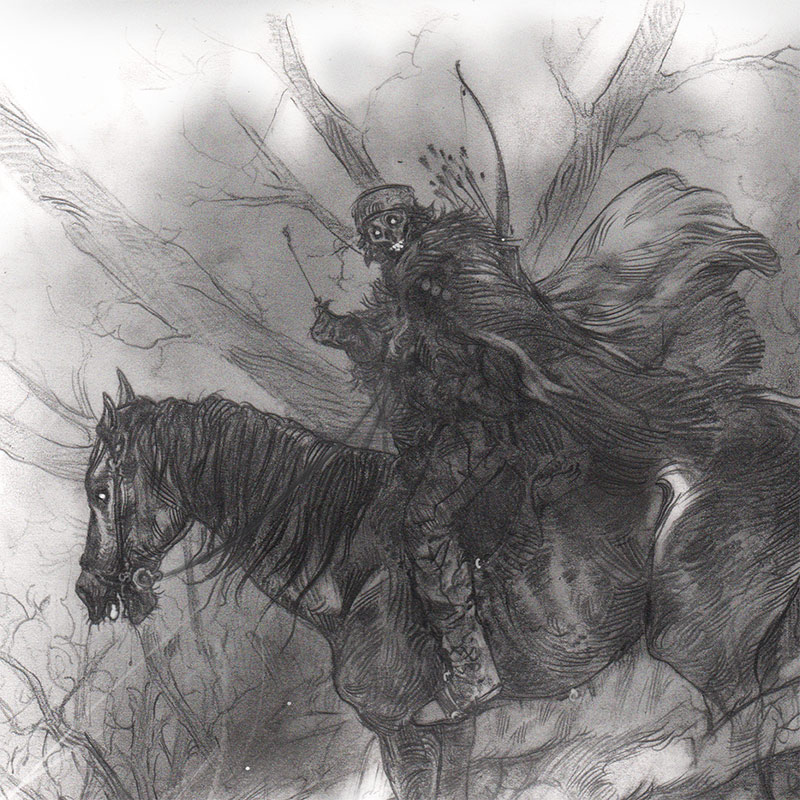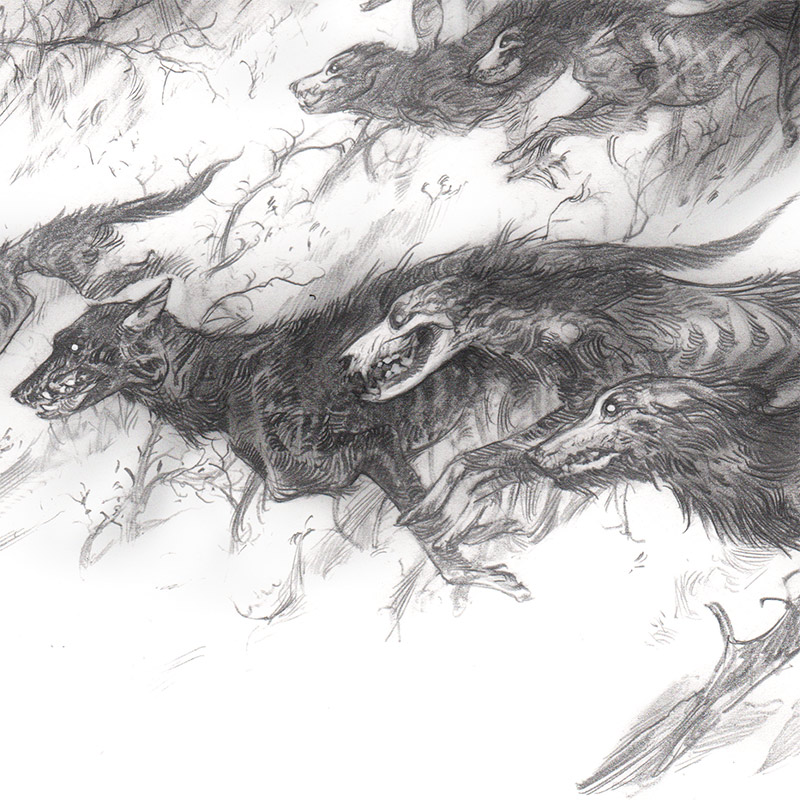Description
‘Hundeprest’ by Tiffany Turrill
Artist: Tiffany Turrill
Title: ‘Hundeprest’
Medium: Graphite (Pencil and Powdered) on Paper
Dimensions: 12″ x 9″
Framing: Unframed
Year of Creation: 2019
Artwork Will Ship From: USA
About the Artwork:
“Although some folklorists make a distinction between “vampire,” “ghost” and “revenant,” prior to the nineteenth century, the terms are largely used interchangeably. In folkloric history, the function mirrors that of cursed creatures today: cautionary tales of ‘worldliness’ in the face of Christian hegemony, social reproach, contagion from disease and ideas. The mechanisms were up to speculation, but belief in souls returning from the dead were common in 12th century Scotland, and historian William of Newburgh (1136–1198) who seems to have had a fascination with them, briefly recounts a few contemporary claims in his work.
In one story, a worldly priest nicknamed Hundeprest (hound-priest) for his “addiction to the vanity” of hunting rather than dedication to spiritual matters, had a poor reputation among his community and peers. He maintained a dalliance with a local “illustrious lady” up until his death and burial, at which point the guilt of such a secular life re-animates him, sending him roving throughout the countryside wailing and harassing the villagers, especially his former mistress.
Despite the centuries of distance, the story has a fairly modern-sounding conclusion: a team of righteous monks and “powerful young men” is assembled, they converge on the grave and do battle with the creature. In later tellings the Hundeprest displays more standard gothic vampire abilities: transforming into a gigantic bat, and like the Norse draugr it displays immunity to conventional weapons, necessitating the destruction of its body. A monk sinks an axe into the revenant, sending it retreating back to the grave. At daybreak they re-open the grave, and finding the bloodied dormant creature, remove it to a safe distance and burn it to ashes.
Although it is taboo to speak to ghosts, and it is death to see Black Dogs or witness the ride of the Wild Hunt, the Hundeprest story suggests at something more tangible, rooted within the social clime of the community under the shadow of the Abbey. Indeed William’s other examples nearly all feature wicked men fleeing the authorities, men who prove an irritant to the community. Perhaps a better example comes from a less romanticized account of a woman whose husband recently died. The husband revives from the dead and comes to visit her at night in her bedchamber and he “…not only terrified her on awaking, but nearly crushed her by the insupportable weight of his body.” This happens for three nights, and the revenant then repeats these nocturnal visits with other nearby family and neighbors and “…thus become a like serious nuisance,” eventually extending his walks in the broad daylight around the village. Eventually the problem was solved by the bishop of Lincoln who wrote a letter of absolution, after which the man’s tomb was opened. It was seen his body was still there, the proper paperwork was placed on the dead man’s chest, and the tomb re-interred and sealed.” – Tiffany Turrill
About the Artist:
(Artist Bio)
Tiffany Turrill is an illustrator, comic cover artist, and concept artist currently living in Berkeley. Originally from Dallas, she received her BFA in illustration from the California College of Arts and Crafts.
She worked for nine years at bay area video game studios as a concept artist but now freelances full-time. Collaborators have said her recent work “weav(es) wild narratives in watercolor and pencil” and is “hauntingly macabre,” which she think was very sweet of them.



